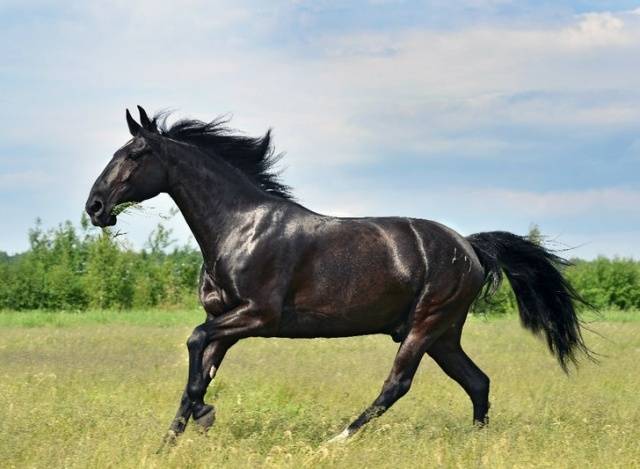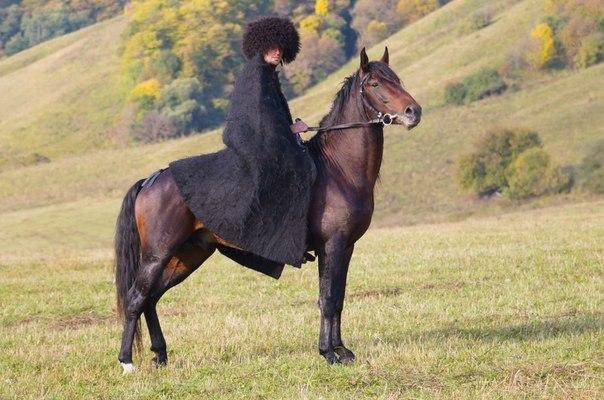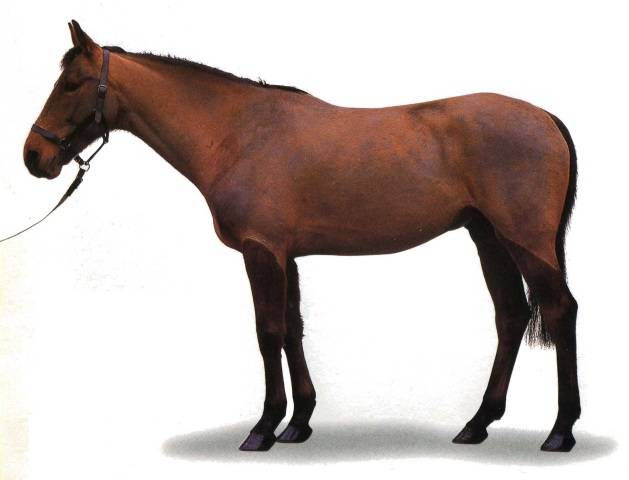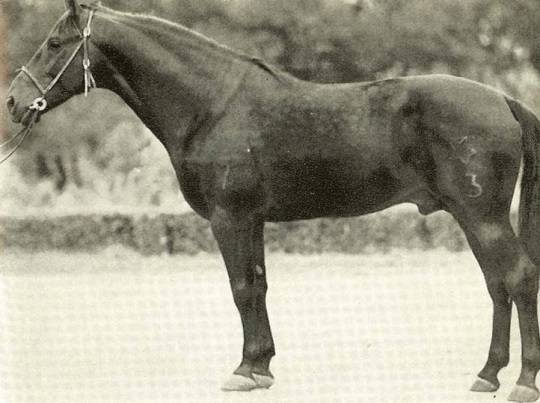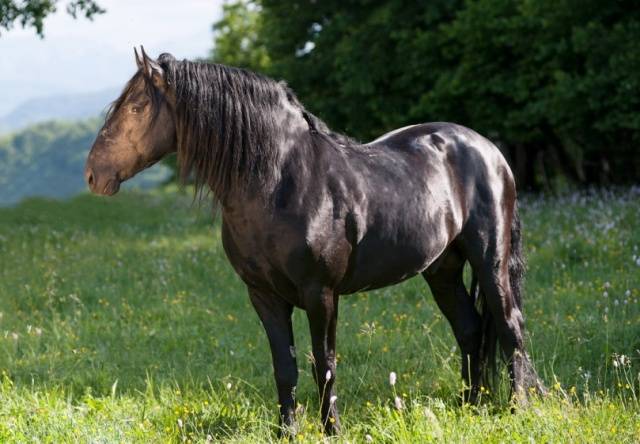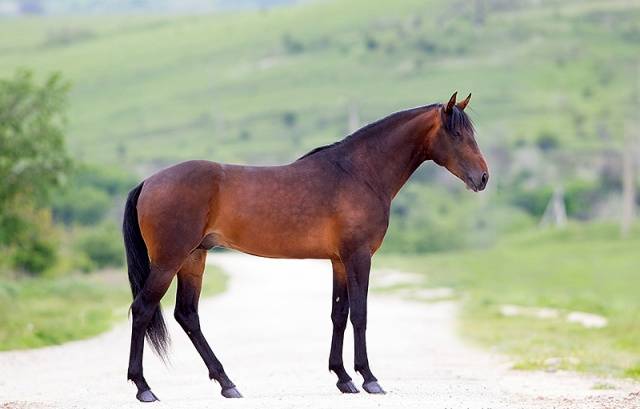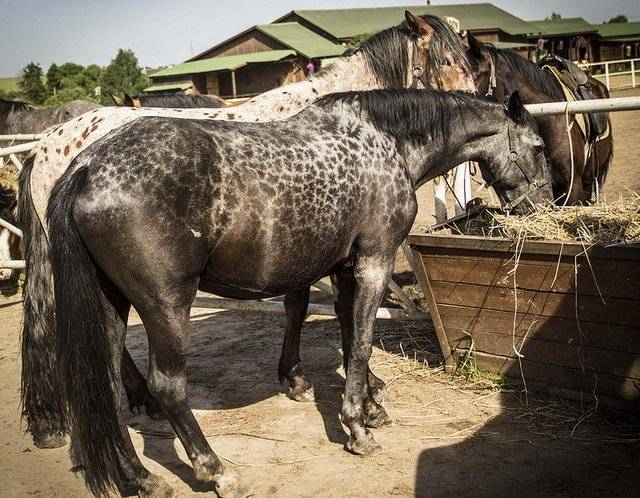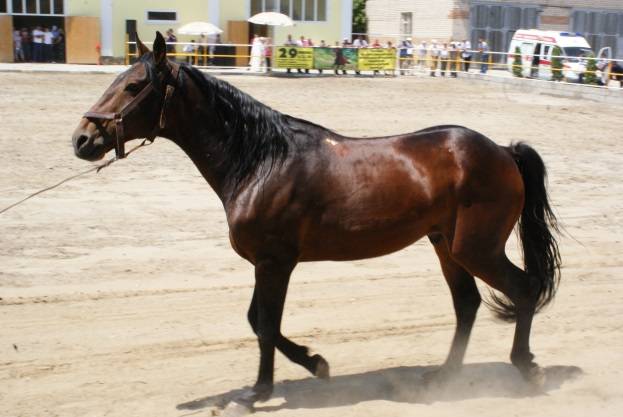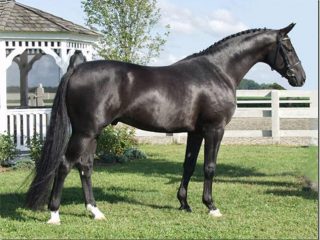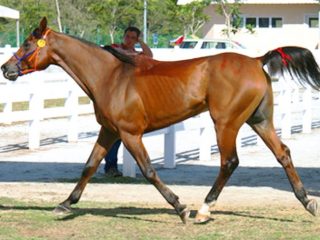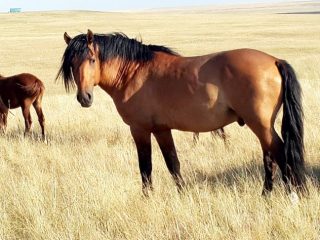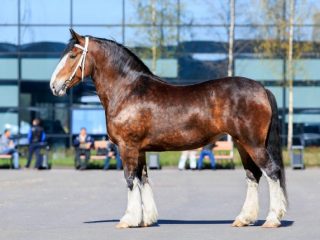Content
The Karachaev breed of horses began to form around the 16th century. But then she did not yet suspect that she was Karachai. The name "Kabardian breed" was also unfamiliar to her. In the territory where the future breed was formed, lived a group of nationalities that bore the general self-name of Adyghe. Not a single conqueror of the World passed by the Caucasus and the Caspian lowland, and the local horse population was influenced by the Turkmen, Persian, Arab, Turkish war horses. The southern steppe horses, including the Nogai horse, did not forget to check in. In peacetime, the Great Silk Road passed through the Caucasus. In the caravans there were inevitably oriental horses, which mixed with the local population.
With the arrival of the Russian Empire in the Caucasus, the horses of the mountaineers were called Adyghe or Circassian. The second name came from the name of one of the peoples of the Adyghe group. But the name "Circassian" caused confusion, since at that time in the area of the Ukrainian city of Cherkassy a different breed of horses was bred for military needs. By the name of the city, the Ukrainian breed was called Cherkassy. Accordingly, the Adyghe horse could no longer be called that. This would cause serious confusion. However, the Russian Empire did not bother itself with the development of horse breeding in the Caucasus region, although in 1870 a stud farm was founded in the village of Prirechnoye, which supplied the Adyghe horse to the tsarist army.
Systematic work with the breed, including for the army needs, began after the revolution, when the Red Army needed a large horse population. At the same time, the name of the breed was also changed. Today this circumstance is hotly debated.
How was formed
It is believed that the Circassians were sedentary agricultural peoples, but to protect themselves from enemies and, to be honest, military campaigns against their neighbors, they needed a war horse. However, there is information that the life of the Circassian was entirely tied to the horse. This means that the population lived primarily by robbery raids. The Circassians needed a horse not only capable of operating in horse lava, as was the case in regular armies, but also having the ability to help out the owner during a duel or loose battle. And the owner had to be taken to the place of the battle.
It is about the area over which it was necessary to drive the owner, today hot disputes arise. Admirers of the Karachai breed claim that in Kabardino-Balkaria there is practically a flat area. This means that the Kabardian horse did not need to move along the mountain paths. That is, "if it can move along mountain paths, then it is Karachai." Kabardian supporters horse breeds they are very surprised at this argument: both administrative formations are located along the eastern foothills of the Caucasus Range and have a similar relief.
Thus, the first item of requirements in the formation of the breed is the ability to move along steep mountain paths.
The second requirement is hard hooves, since the population did not differ in special wealth and could not afford to spend money on iron horseshoes. Through brutal popular selection, the principle of which has been preserved to this day: "a good horse does not lame, we do not treat a bad one", the Karachai (Kabardian) horse acquired very hard hooves, which allowed it to move around rough rocky terrain.
Due to the influence on the local population of the Caucasian horses of other breeds, several types were formed in the Kabardian breed:
- fat;
- kudenet;
- hagundoko;
- tram;
- shooloh;
- krymshokal;
- achatyr;
- Bechkan;
- shejaroko;
- abuk;
- shagdi.
Of all the types, only the shagdi was a real war horse.The rest of the types were raised in peacetime and appreciated some for speed at races, some for endurance, some for beauty.
The stallion could, with a laugh, give out an ambush or reconnaissance, while the mares' business was to bring foals.
The history of the origin of the name
The history of the Kabardian horse breed begins with the establishment of Soviet power. For breeding the Caucasian livestock of horses, they used the Malkinsky stud farm in Kabardino-Balkaria, which remained from the time of tsarist rule, plus two more were built in Karachay-Cherkessia. One of them - Malokarachaevsky - still works today. From that moment on, confrontation arises.
During the Soviet era, the confrontation was secret, and the breed was named "Kabardinskaya" by the will of the authorities. Until the 90s and the parade of sovereignties, no one objected. Kabardian so Kabardian.
After the national consciousness leaped up, heated disputes began between the inhabitants of the two republics as to who "owns" the breed. They were not even embarrassed by the fact that the same stallion could produce for a year at the Malkinsky plant and be the champion of the Kabardian breed, and the next year cover mares at the Malokarachaevsky plant and be the champion of the Karachaevsky breed.
If we compare a photo of a Karachai horse and a photo of a Kabardian horse, then even a resident of these two Caucasian republics will not see the differences.
Stallion of the Karachai breed.
Stallion of the Kabardian breed.
Equal straight shoulder, convenient for walking on mountain paths. Same croup. Equal neck set. The color is different, but typical for both breeds.
The rest of the equestrian world did not understand the beauty of such a division, and the Karabakh breed is completely absent in foreign sources. There is only Kabardian.
When buying a horse not from the factory, but from private hands, you will have to believe the owner's oaths even more. In addition, in the latter case, it is possible that the horse will turn out to be a mongrel at all.
Since the difference between the Kabardian and Karachai horse breeds lies in one line of the breeding certificate and the administrative border between the republics, you can safely go to any of the two factories to buy an Adyghe (Caucasian) horse. The Kabardian horse bought at the Malkinsky plant becomes Karachay as soon as it crosses the border of Karachay-Cherkessia.
Exterior
When describing the standard of the Caucasian horse, hardly anyone will be able to notice the distinctive features of the Kabardian horse from the Karachai horse, although the breed and type can be confused. Fans of the Karachaev horse argue that this breed is more massive than the Kabardian one, contradicting themselves. While in the Kabardian breed, from the time of the founding of stud farms in the young Land of the Soviets, there are three types:
- Oriental;
- main;
- thick.
If we compare the types of the Kabardian (Karachaevskaya) horse breed with photographs and names, it will become obvious that the “Karachaevskaya”, which moves well in the mountains, cannot be more massive than the plain “Kabardinskaya”. The dependence is the opposite: it is difficult for a large massive horse to wade along mountain paths, but it is more convenient to put a more powerful horse in the harness.
The eastern type is distinguished by pronounced features of upland breeds, often with a straight head profile and light dry bone. Good for steppe races, but poorly suited for pack work. For a pack you need a horse with a slightly more massive bone.
The main type is the most abundant in the breed and is distributed throughout the region. These are horses with heavier bones, but not so massive as to be unable to maintain balance on mountain trails. This type combines the best traits of a mountain horse.
The bushy type has a long, massive body, well-developed bones and dense forms, making horses of this type look like a light-hardened breed.
In typical representatives of the breed, the height at the withers is 150-158 cm. The length of the body is 178-185 cm. The girth of the pastern is 18.5-20 cm. Horses raised in the factory on good feed can be even larger.
The head is light, dry, often with a hump-nosed profile. The neck is of medium length and well defined, with a well-defined withers. The back and loin are short and strong. Beveled croup. The ribcage is deep and wide.
Legs dry, strong, with well-defined tendons. Place the front legs straight. Sweep or clubfoot are faults. Very often horses of this breed have saber hind legs, although in other breeds this structure is a disadvantage. Sometimes an X-shaped set can be added to the saber fence. The hooves, which have the shape of a "cup", are also distinguished by their characteristic shape.
An interesting fact is that the photos of the Karachai horse breed are often the same ones that can be found on the request "photo of the Kabardian horse breed."
Suits
The most widespread are dark suits: bay and black. Red and gray suits may come across.
Such graying does not hide the main suit, but looks like a gray net on the horse's body. Such marks are called "giraffe" marks. In the photo there is a horse of the Karachaev breed with giraffe marks. True, it is Karachai, according to the seller. The origin of this mare is unknown, there are no pedigree documents, but it was brought from the Caucasus.
Gaits
The specificity of the Karachai and Kabardian horse breeds is that among them there are many individuals moving in specific gaits, very convenient for the rider. But these individuals are not able to run in the usual trot and gallop. Horses capable of running with such gaits were highly prized by the mountaineers when traveling long distances.
The basic gaits of the Adyghe horses are also quite comfortable for the rider, since their stride is rather short because of the straight shoulder. The horse maintains speed due to the greater frequency of movements. To get an idea of the way Caucasian horses move, you can watch a couple of videos.
Kabardian pacer.
Video of the Karachai pacer horse.
It is easy to see that in terms of movement and exterior, there is no difference between the horses.
Features of the national character
“The Kabardian horse is evil. I go to the tree, he follows me. " In fact, the character of these horses is no more vicious than that of other aboriginal breeds, accustomed to surviving without human participation and making decisions on their own.
At the same time, in the mountains, horses are largely dependent on a person, therefore, having understood what a person wants from them, mountain horses are happy to cooperate. Another thing is that often a horse simply does not understand why a person needs to chase a cow or "ride" on a small fenced area. That is why you need to carefully drive the rider along a narrow mountain path, it is clear: you need to go to another pasture or get to another village.
Because of such features, many consider the Adyghe horses stubborn. So it is when compared with the European sports breeds bred for unquestioning obedience. You will have to fight a lot with a horse of the Kabardian / Karachai breed.
They are not evil either. Rather, smart and not focused on communicating with many people. According to the reviews of the owners of Kabardian and Karachai horses, these animals tend to single out one person for themselves, obeying him in everything.
Aboriginal animals still need to prove that you are the owner and can demand something from them. Not everyone succeeds.
Suitability in the modern world
In this video, a true lover of Kabardian horses claims that the horses are suitable for runs.
Unfortunately, modern races for serious distances from 100 km are run almost exclusively by Arab horses. The rules provide not only for the horse to overcome the distance, but also to quickly recover after the run. Mandatory veterinary inspection is carried out after each stage of the run. Caucasian horses cannot withstand such loads. Or they recover for a very long time, losing to their rivals. Or they become lame. Lameness can be both real and physiological, arising from unbearable loads.
In show jumping, they lose because of their height and low speed of the route. And in dressage because of the structure.
But Caucasian horses can be very good at an amateur level. Where you need to help out the rider or run not too long a distance. Their big plus is their low price. In their homeland.
And there is also a very serious minus: a horse raised in the mountains in the clean air begins to hurt after arriving on the plain in the city. This applies not only to Caucasian, but also to other aboriginal horses that grew up far from civilization and lived in the open air all year round. Respiratory problems in these horses start very quickly.
Testimonials
Conclusion
To end the dispute over whose breed is more thoroughbred, it would be wise to return the Caucasian horse to its original name "Adygea", uniting both populations. Adyghe ones are poorly suited for keeping in a private courtyard, if you need to use them in harness. But they are not bad at amateur sports. And they even know how to run dressage circuits for beginners, where the rider's actions are still important, and not the quality of the horse's movements.
